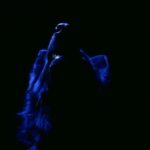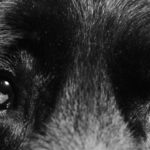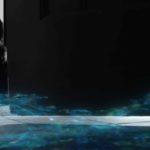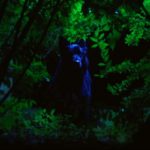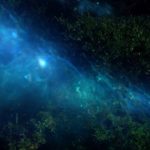Learn how to make VFX short movie on a tight budget – Dog in the Woods.
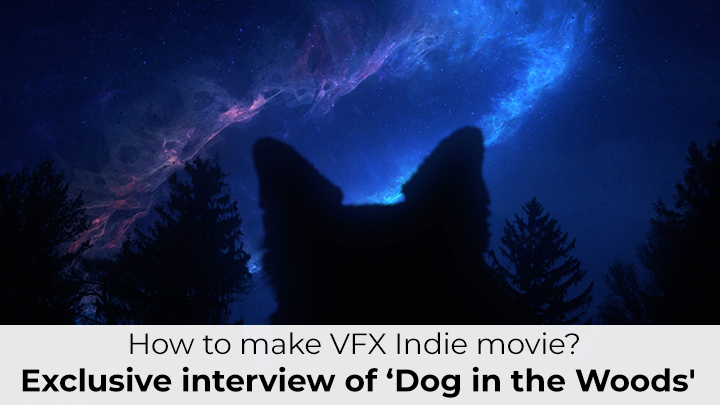
Dog in the Woods follows Alice, a jet black German Shepherd Dog, who breaks free from the drab confines of her master’s house, and bolts into the woods at night. What begins as a dream-like feast for the senses becomes a dark wake-up call, one that questions the place of a domestic animal in a feral world. Exploring the phenomenon of synesthesia, Dog in the Woods uses mind blowing visual effects to illustrate the sounds and smells that drive dogs wild.
Check out the exclusive interview with Paul Jason Hoffman and Christian Chapman regarding how to make VFX indie movie – Dog in the Woods. Before going ahead, enjoy the short movie.
The Virtual Assist welcomes Paul and Christian. Kindly let us know your academic and professional background.
CC: I’ve been making films since I was a kid. I went to film school at The Art Institute of California–Los Angeles, and went on to manage the Maysles Documentary Center in Harlem, NYC. Since then, I’ve worked as a freelance cameraman and co-founded Resonator Films along with my longtime friend and collaborator, Paul Jason Hoffman.
PJH: I studied international affairs at The George Washington University, so I’ve never been formally educated in film. Christian and I began making films together in 7th grade, and reunited after college to make a feature documentary in the Peruvian Amazon, La Selva Tranquila. We’ve worked on all types of projects since then – music videos, docu-style branded videos, and most recently our debut narrative short, Dog in the Woods.
The concept of DOG IN THE WOODS is quite unique. How you both zeroed on this subject to make an indie short movie?
PJH: We came up with the concept for Dog in the Woods when our friend introduced us to a talented VFX artist who had recently moved from Japan to NYC. We’d never seen anyone apply 3D tracked particle effects to live action footage like he could, on his laptop, in minutes. He made it look easy, and opened our minds to infinite possibilities. Then he went back to Japan, and we alone discovered just how challenging VFX production can be.
CC: P.J. and I have always been interested in using film as a vehicle to explore hidden worlds, so we were extremely excited by the challenge of illustrating a dog’s sensory experience. My dog, Alice, was such a cool-looking subject––huge, black, and wolf-like, yet also very expressive and cute, so I had always wanted to film her. We also had unlimited access to my family’s house in Connecticut and many acres of woods behind it, so we realized that we had the resources so make something really visually unique.
Can you please explain the entire pipeline of indie short movie – from conceptualization to final post production?
Here was our process / workflow for the filmmaking of indie short movie:
- We came up with a “low budget idea”, in that it used our resources: One location––my family’s house in Connecticut, and one actress––my dog.
- We made a rough script and storyboard.
- We chose our equipment. P.J. and I own a Sony FS700, so that would be our camera. We wanted smooth low-to-the-ground camera moves, so we bought a compact skateboard dolly and a wooden board to roll the camera on. We assembled 6 makeshift Chinese lanterns and fitted them with fluorescent bulbs, to simulate moonlight. Then we gathered a couple ladders, Home Depot work lights, and many extension cables, and we were ready to shoot.
- We committed to a schedule, and spent many nights filming Alice and different aspects of her environment, inside the house and in the forest.
- Rough cut edit, no sound.
- Coloring.
- We recorded foley and ambience for everything seen on screen, and created SFX with the help of our sound designer, Cody Troyer. (There was little usable audio from production.)
- We learned the basics of VFX supervision.
- We made a plan for every visual effect we wanted to add to the footage. We drew designs on top of still frames, and compiled inspirational reference images, to create a “VFX Direction Storyboard.” With this storyboard, we were to explain exactly what we wanted.
- We set out to hire VFX designers, tracking and rotoscoping artists, and compositors. We scoured the internet for our favorite videos featuring psychedelic visual effects and emailed the people who made them to see if they were willing to work with us. Eventually, we had an international roster of different specialists who we could direct remotely to produce each effect.
- We directed VFX artists over Skype and email, through many rounds of revision, until each effect was complete.
- We were unsatisfied with our ending, so we scripted and storyboarded a new one. We went back into production mode for a few nights, then back to the edit.
- Picture lock.
- Final color pass.
- Final sound mix.
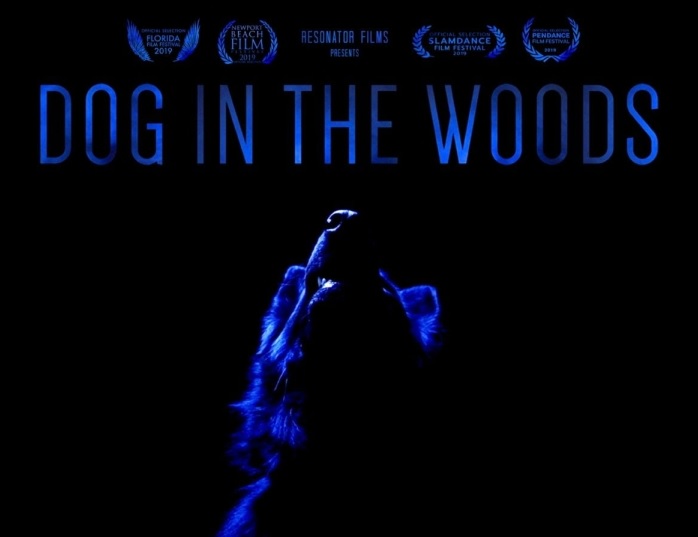
How you managed to get in team the VFX duo – Marc Zimmerman and Andy Thomas? Let us know more about their roles and responsibilities.
CC: We found Marc Zimmermann and Andy Thomas while searching the internet for otherworldly 3D motion design. After they independently agreed to work with us, we assigned them to design different effects that were suited to their unique visual styles. We were very inspired by Marc’s CG atmosphere creations and realistic particle design, so we worked with him to develop the “Ring of Life” effect and the sinewy “Carnage Cobweb.” Andy’s incredible psychedelic “sound sculptures” were right in line with our goals to explore the phenomenon of synesthesia. For example, he had already illustrated the sounds of various birds in his works, Visual Sounds of the Amazon and Synthetic Nature, so it was natural to work with him to bring our owl sound to life.
How was the shooting experience with Alice?
CC: Shooting with Alice was very rewarding, but also a huge challenge. Alice is a smart dog. But she’s not an actress. She’s never acting, only responding to off-screen stimuli – mainly, treats. To keep her attention and general obedience, we were always armed with tasty snacks.
You must have faced various practical shooting and post production problems. How you successfully overcame them?
CC: Back to Alice… Many of the shots we storyboarded involved a moving camera and a very contained lighting set-up. Therefore, there wasn’t much wiggle-room to accommodate for when Alice did not hit her mark. She rarely hit her mark, and never repeated the same action twice, so nearly every take required tedious camera and lighting adjustments. We solved some problems by wrapping her collar in black gaff tape, and using a thin black leash to blend with her fur, so we could invisibly guide her through the right part of the frame. This method only worked for close-ups, however, because someone had to be nearby holding the leash.
Sound effects of DOG IN THE WOODS are exceptional. Did you use sound foley library or made your own?
PJH: Thank you. Our main challenge with sound was that we needed to create every piece of audio in post – every footstep, every breath, every rustling of fur. None of our production audio was usable because Christian and I were heard on every take, commanding Alice to “sit” or “stay.”
In addition to the straight-forward foley that we recorded and patched into the film, we also got to play around with some creative sound ideas. We started to wonder how a dog might perceive sounds like toilets flushing or phones ringing. We recorded all types of sounds – teapots boiling, old dishwashers opening up, a heat lamp turning on – and played around with the speeds, pitches, and effects to create an auditory universe of Alice’s mind. It took a while, but it was so fun to have a project like this where the story allows for experimentation.
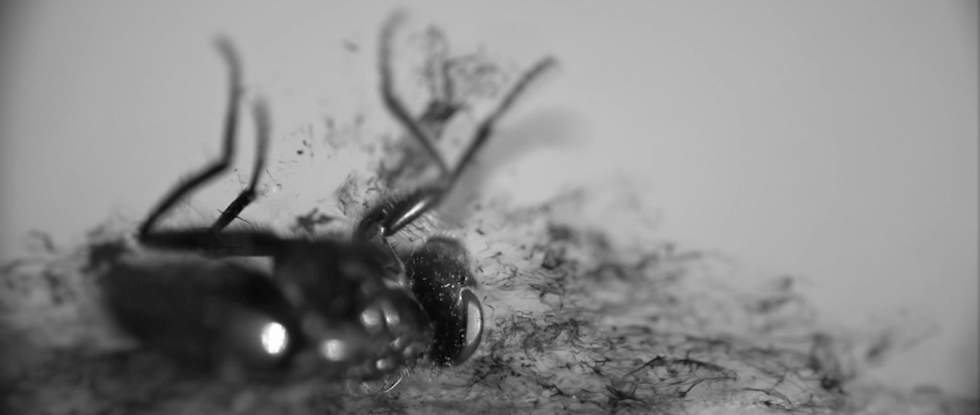
The movie is a visual treat. How you managed pre production / cinematics to achieve the final VFX look?
CC: With the tone of the film, we sought to balance science and fantasy. Although our ideas for the VFX were very free-form and psychedelic, we still wanted them to be motivated and represent something real and natural. We delved into Vimeo and Youtube to find examples of VFX art that was inspired by the natural world in some way, and looked weightless, as though it could be hidden in the air we breathe, like sounds and smells; particle clouds, energy fields, organic molecules, and so on. We developed a diverse, but cohesive collection of professional visual references that informed our own designs, and helped us communicate our goals to the VFX artists we hired.
The color correction, grading and editing are superb. How much time you devoted to finalize this look and feel?
PJH: Thanks Amit! I owe a lot of credit to our crew for establishing our look – which is cold overall, with hyper-saturated blues, greens, and varying shades of red.
During our first shoot, our friend cranked our camera’s gamma and/or white balance setting to its most extreme end of the spectrum, so a lot of our look was baked into the footage from the get-go. We also played around with contrasty black and white, as both an homage to the common misconception that dogs only see in black and white, as well as to differentiate between the dull prison-like environment of the house, at odds with the thrilling world of the woods.
For color correction/grading, we worked with Oliver Eid (eidoColor). He’s super talented, quick, and knows where to get the best spicy noodles in Harlem during lunch break!
Please let us know which softwares are used in the process.
Using best Visual Effects softwares were very much essential for us. We used following softwares for audio and video post production process.
- Adobe Premiere
- Adobe After Effects
- Houdini
- Cinema4D
- Blackmagic Design DaVinci Resolve
- Dragonframe
Marc Zimmermann, of EpicScapes: On the software side I used Cinema4D and After Effects. The rotten spiderweb effect, for example, was created using the native cloth simulation tools of Cinema4D. I created a custom texture with the X-Particles plugin using a particle system emitting from a heavily cut static 3D mesh and an effector that created connections between the particles. Once pre-rendered that texture was refined in After Effects with a bit of turbulent displace and vector blur and then re-imported into Cinema4D to be rendered on the simulated cloth mesh. The compositing of the final shots happened in After Effects as well, where the lighting, color and glow were balanced and the web integrated into the live-action footage using e.g. 2D post motion-blur and post depth-of-field effects.
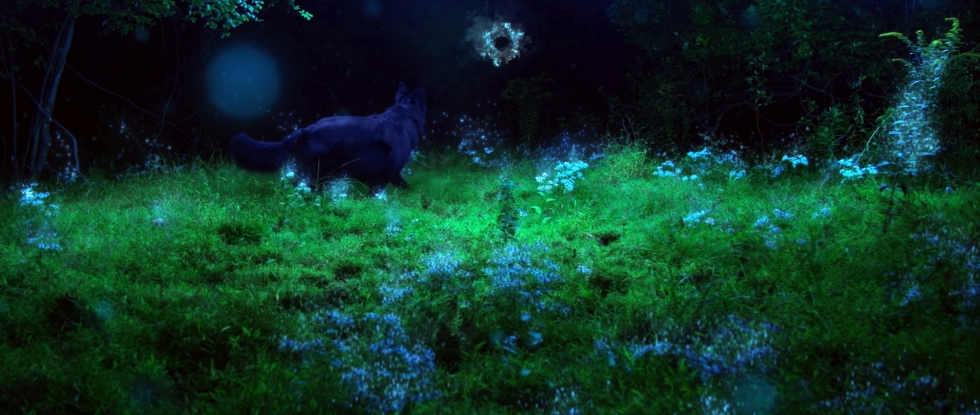
Please list down all the awards and accolades of DOG IN THE WOODS.
OFFICIAL SELECTION:
- Slamdance Film Festival 2019
- Pendance Film Festival 2019
- Florida Film Festival 2019
- Newport Beach Film Festival 2019
- St Kilda Film Festival 2019
- Woods Hole Film Festival 2019
Please provide your valuable tips and tricks to other indie short movie makers.
PJH: I’m far from a seasoned vet, so take my advice with a grain of salt:
- Tap your resources
- Work backwards
“Tap your resources” as in identify everything you have access to, and craft your story around those elements. In our case, we had Christian’s expressive, wolf like dog, his woodsy backyard, and his parents’ house. We ran into trouble when our story extended beyond our resources. Our story relied heavily on VFX, and since we didn’t have any VFX artist friends, our timeline and budget were stretched. So take advantage of the resources that are readily available now, and use your constraints as catalysts for creativity.
“Work backwards” as in write your long-form project (feature, TV series, etc) first, and craft your shoestring budget short film second, based off the long-form project. We’ve all heard success stories of shorts evolving into features, like the case of Whiplash. While those stories are rare, that approach seems logical to me.
CC: Pre-production. You might be chomping at the bit to start production, but I’d recommend delaying this as long as you can, for the sake of careful planning. Treat every minute you have to map, draw, and problem-solve before production like it’s a precious gift. If you have a script, make a storyboard. If you have a storyboard, make an animatic. If you have access to a location, test every shot. Planning is free, and problems during production and post-production are expensive. You’ll never be fully prepared, and that’s part of the beauty and excitement of filmmaking, but good pre-production means you will blaze through some shots so quickly that you’ll have extra time to manage a crisis, should one arise.
We again thanks Paul Hoffman and Christian Chapman for sharing their productive inputs with us. We would like to see ‘Dog in the Woods’ reaching at new heights.

